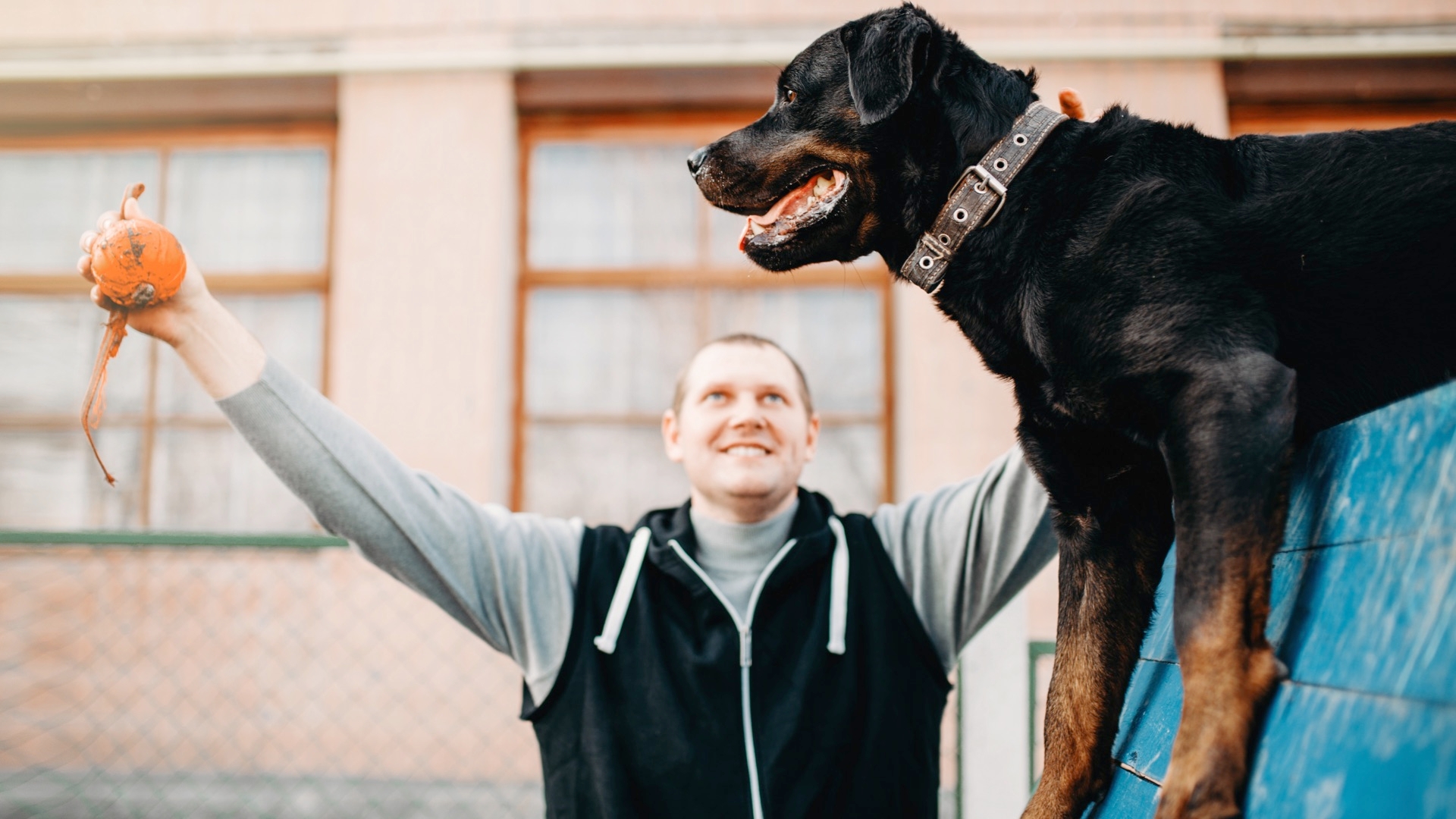Why You May Want To Consider Relationship-Based Dog Training:
Summary:
Relationship-based dog training is based on trust. When you have a trusting, cooperative relationship with an animal (whether a dog, cat, parrot, horse, or another animal), you have his respect, and he'll want to spend time with you and work with you. Relationship-based trainers do not train with methods that use excessive force, threats, fear, intimidation, pain or dominance. Training based on such aversive methods damages any trusting relationship you might develop with the animal.
When you have a trusting, cooperative relationship with an animal (whether a dog, cat, parrot, horse, or another animal), you have his respect, and he'll want to spend time with you and work with you. Relationship-based trainers do not train with methods that use excessive force, threats, fear, intimidation, pain or dominance. Training based on such aversive methods damages any trusting relationship you might develop with the animal.
Relationship-based training can be used to effectively teach new behaviors and changes current behavior for any physically and mentally healthy animal. By reinforcing behaviors you like and want to continue seeing, you set the animal up for success. Regardless of an animal's age and past experiences, such ethical training methods give the animal the best chance to live happily and comfortably in our hectic human world.
It is also essential to understand that every interaction is a learning experience, so every time you interact with your pets, you train them, whether or not you intend to. Relationship-based training is a lifestyle — a constant dialog with your pets rather than a one-way issuing of commands that only occurs in structured training sessions. So instead of waiting for the rare chance to work on modifying the animal's behavior, it's better to be aware of every opportunity to arrange your pet's environment to reinforce your desired behaviors.
Animal training tips
What exactly do we mean when we say "relationship-based training"? It is a method of training that uses the cooperative relationship between the trainer and the animal to achieve mutually beneficial results while at the same time enhancing and strengthening their relationship. Here are some of the basic principles:
- Put the animal's immediate needs first. Is your pet injured, ill, fearful, frustrated, hungry, thirsty, or do they need to eliminate? Put off training until the animal's immediate needs have been met and they can concentrate on the training exercise.
- Learn to accurately interpret animals' body language. There are a lot of common misconceptions about animal body language, especially for dogs, due to the prevailing myth of dominance-based social structures. These misconceptions frequently lead to human misinterpretation of the animal's emotional state and intentions. For this reason, getting sound, science-based information about the body language of the species you are working with is important. All species exhibit telltale signs that let you know how the animal is feeling, whether it's joy, anger, fear, frustration, or some other emotion. Understanding body language improves communication between people and animals and helps keep all involved safe.
- Find out what motivates the animal (e.g., treats, affection, verbal praise, toys) and use it to your advantage. It's also essential to ensure the animal is motivated to work with you. We tend to assume that pets should automatically adore us, but that isn't always the case. So the first step is to build a relationship with the animal by spending time with him and creating an association between your presence and things he likes.
- Use positive reinforcement to encourage the behavior you want. You can elicit and reinforce desired behavior through capturing, luring, shaping, or cueing techniques.
- Avoid aversive methods. Aversive methods such as force, threats, fear, pain, intimidation, and dominance are unnecessary for eliminating undesirable behaviors. In fact, aversive methods often have many damaging side effects. Instead, ignore the unwanted behavior and/or teach incompatible behaviors. For example, you can teach a dog to sit and stay for a greeting rather than jumping up; he can't do both simultaneously. To reinforce the desired behavior, reward the dog with whatever motivates him, whether it's treats, affection, verbal praise, toys, or something else. In contrast to aversive-based training, this approach supports the trusting and cooperative relationship between you and the animal.
- Prevent the animal's ability to continue practicing unwanted behaviors by controlling the environment and controlling the animal's exposure. For example, distract a reactive dog or limit access to a window, door, or fence line if inappropriate behaviors occur.
- Supervise the animal carefully to set them up for success. You can avoid or prevent unwanted behaviors by simply being aware of what your pet is doing. For example, if a new dog or puppy is not house-trained, don't allow her the entire run of the house until she has been house-trained. Giving an animal too much freedom before she has the necessary life skills to navigate that much space can set her up for failure.
- When an animal's behavior is rooted in a strong emotional state (fear, anger, frustration or even excitement), change the behavior by changing the underlying emotional state. You can do that by pairing the stressful situation with something the animal loves until she feels calm and happy around whatever previously upset her. For example, if a dog gets upset when strangers walk by her gate, we can change how she feels about strangers by having them toss treats over her gate every time they pass by.
Capturing, luring, shaping, cueing
- "Capturing" means using praise and other rewards to encourage the recurrence of behavior that occurred spontaneously.
- "Luring" involves getting the animal to focus on a treat or other desirable object and using it like a magnet to move the animal's head or entire body in the desired direction to produce a behavior or posture you want to reinforce.
- "Shaping" means rewarding the behavior that most closely resembles your end goal behavior and then gradually honing the behavior through a series of small steps until the animal can perform the end-goal behavior.
- "Cueing" is a technique that pairs a behavior an animal already knows how to perform (through capturing, luring, or shaping) with a visual, auditory or tactile signal until the animal learns to perform the behavior when the signal is presented. Examples of cues include holding your hand in front of your dog's face when you want to encourage a "stay" or patting the car seat when you want the dog to jump in.


